Different types of ants
Hello young readers!
We hope you enjoyed our first post on understanding the ant parts. Are you ready for our next post? We are thrilled to present different types of ants today.
Created by Roberta Gibson and Sheethal Veepur

When you venture out into your backyard, park or forest, what kind of ants do you see? Can you look around carefully this time? Did you notice they are not just black or red ants? There are a variety of ants whose names can be something like Bulldog ants or Army ants or leaf-cutting ants. Have you wondered how do they look like, and how they get their name? Here we go, let’s peek into the world of ants found across different continents and see what kind of ants you come across in your neighborhood.
Table of Contents:
- Ants found in Africa
- Ants found in Asia
- Ants found in Australia
- Ants found in Central and South America
- Ants found in Europe and North America
- Word find ant puzzle
Although we often call ants “black ants or red ants,” there are over 14,000 different kinds (species). Each is amazing, with its own special traits and ways of doing things. Some ants march in armies with so many workers that you’d have trouble stuffing them into a large garbage can. In contrast, others have such tiny colonies that they can spend their entire lives inside a single acorn.
To get an idea of all the different kinds of ants, let’s take a quick trip around the world.
Africa
African Stink Ants
When you run into these ants, there’s no need to look them up in a book to figure out what they are. You can identify them by the bad smell. Ants talk to each other and defend themselves using chemicals or odors. African stink ants are thought to use the smelly stuff to tell each other to dig. They nest in the ground, and workers are large for ants with up to 19 mm in length. They eat termites and other insects.
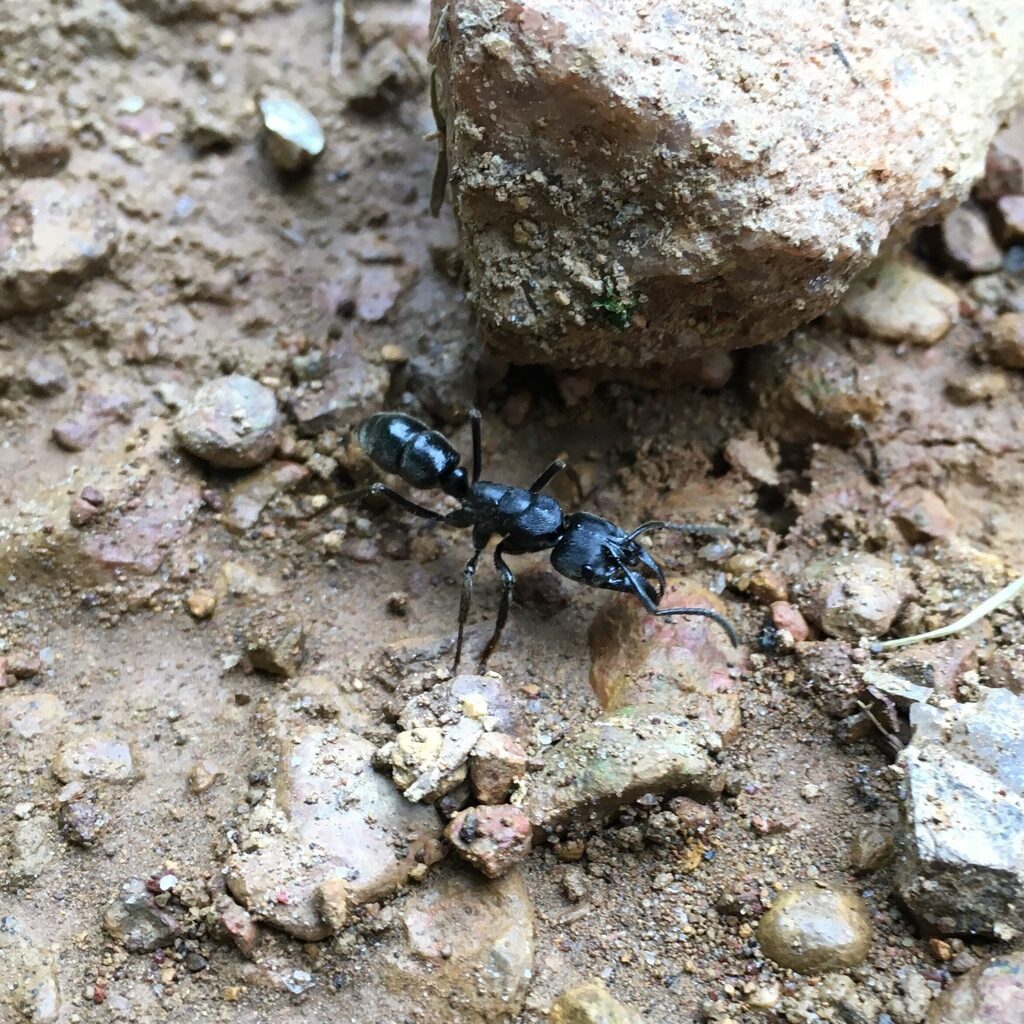
Dracula Ants
Scientists named these ants after a vampire because they suck the body fluids of their own young sisters (larvae)! Although that sounds pretty gross, the larvae survive having holes bitten into them and grow up to become vampires themselves.
Also, odd is that the workers carry the larvae to their food and place them on it, rather than carrying the food to the larvae as most other ants do. For example, instead of cutting up a caterpillar into chunks and carrying it into the nest to feed the larvae, Dracula ants carry the larvae out to the caterpillar.
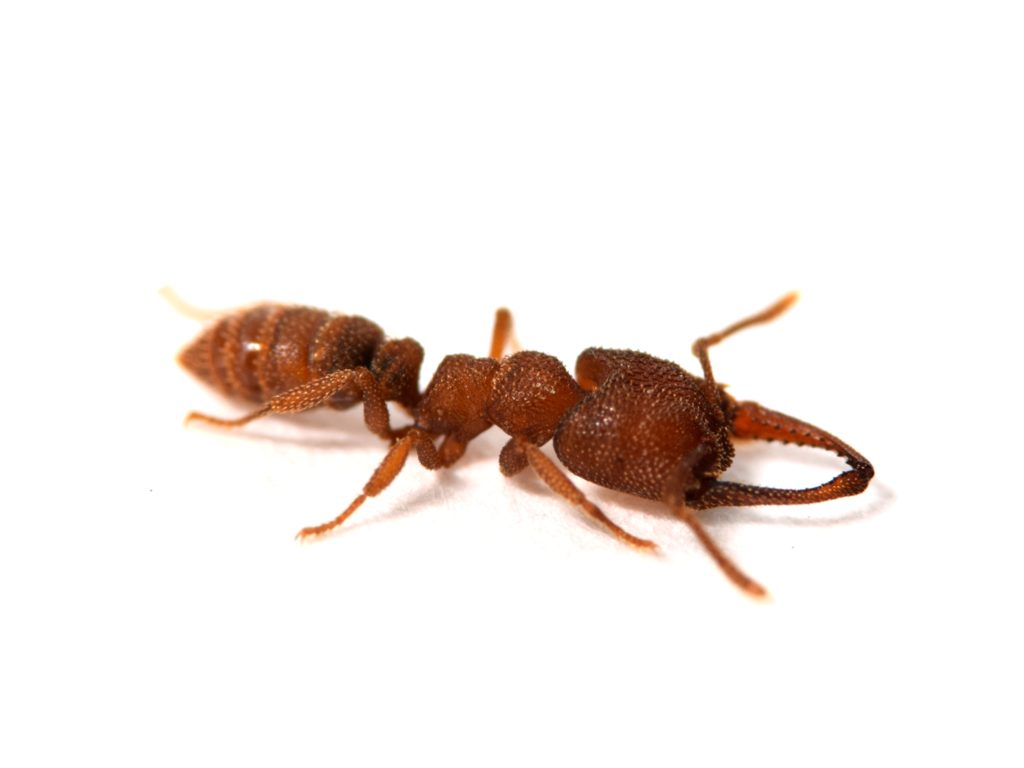
Driver Ants
Africa is known for its driver ants. These predatory ants live in large groups and have a strong bite. They move from place to place, “driving” other animals ahead of them.
Driver ants have the largest queens of any ants, up to 52 mm in length.
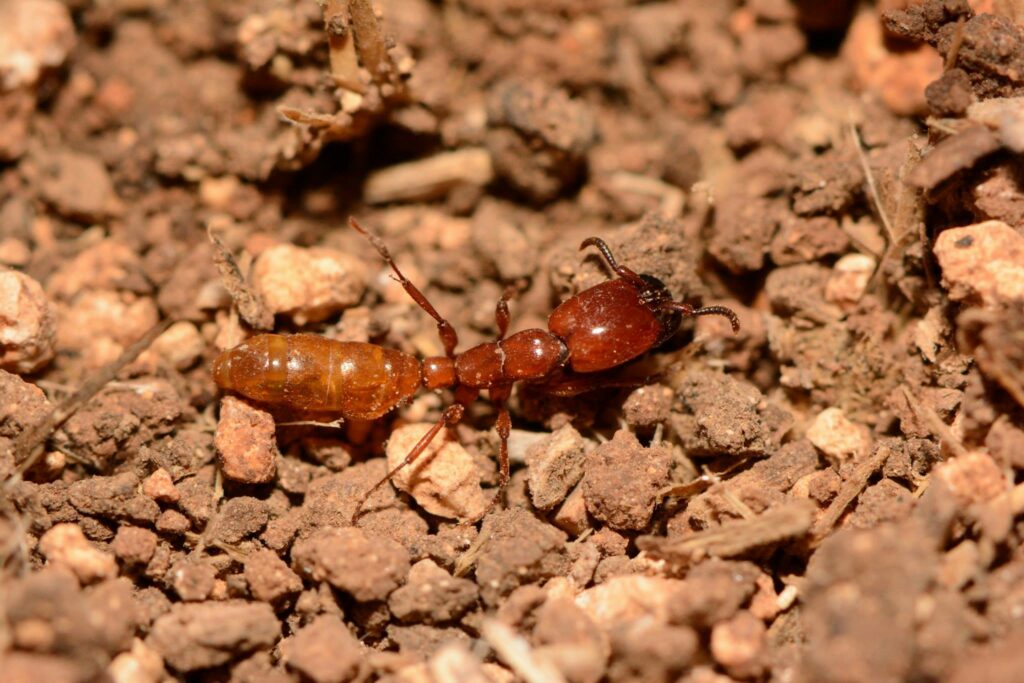
Asia
Black Cocoa Ants
Do these ants eat chocolate? No, black cocoa ants are actually tiny ants that live on cocoa trees in Indonesia and Malaysia. They help farmers produce more cocoa pods by chasing away pests. Although humans tend to notice the big species with numerous workers, it just goes to show that less noticeable ants can play a big role.
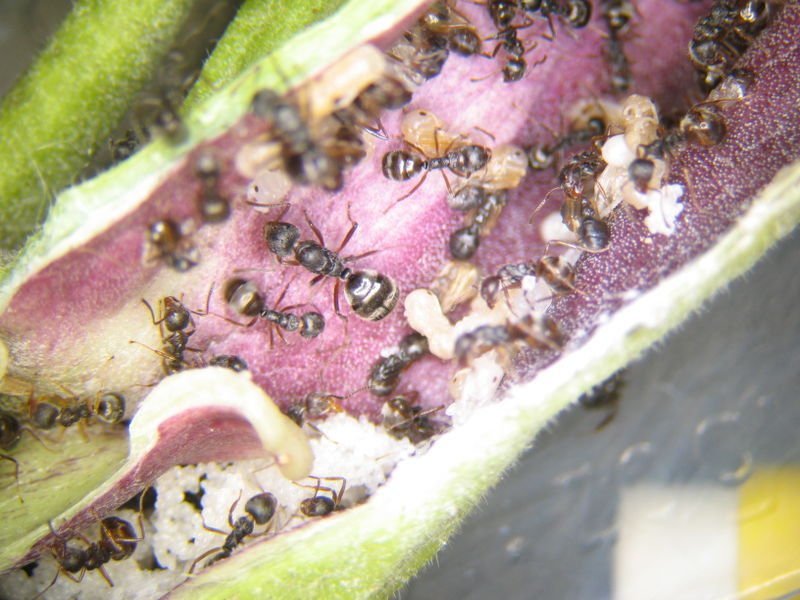
Weaver Ants
Weaver ants are named because they use the silk from the larvae (young ants) to sew or “weave” together leaves in trees. To do this, worker ants form a living chain between nearby leaves in a tree and pull the leaf edges together. Other workers carry the legless larvae to the edges and give them the signal to spit up silk. As the worker ants move the larvae back and forth, the leaves are bound together to form a tent nest.
Weaver ants are elegant, long-legged ants. They are also called green ants due to the greenish color of their rear sections. In some areas, they are called citrus ants or orange ants because they are used to protect citrus orchards.
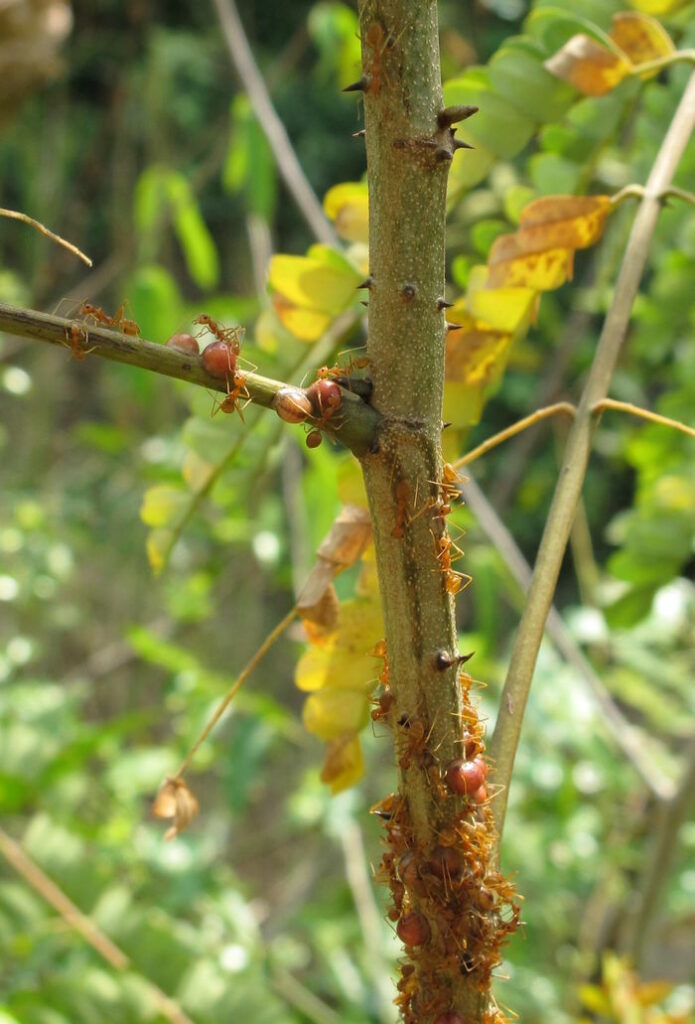
Australia
Bulldog or Bull Ants
Found in Australia, these fierce ants have long jaws, great vision, and sharp stingers to hunt down insect prey. The worker ants are long and slender. They look like a regular ant that has been put in a stretching machine.
Does everything jump in Australia? You have heard of kangaroos and wallabies, but what about ants? Some of the smaller bulldog ants are called jump ants, because they jump at enemies or even jump across the ground.
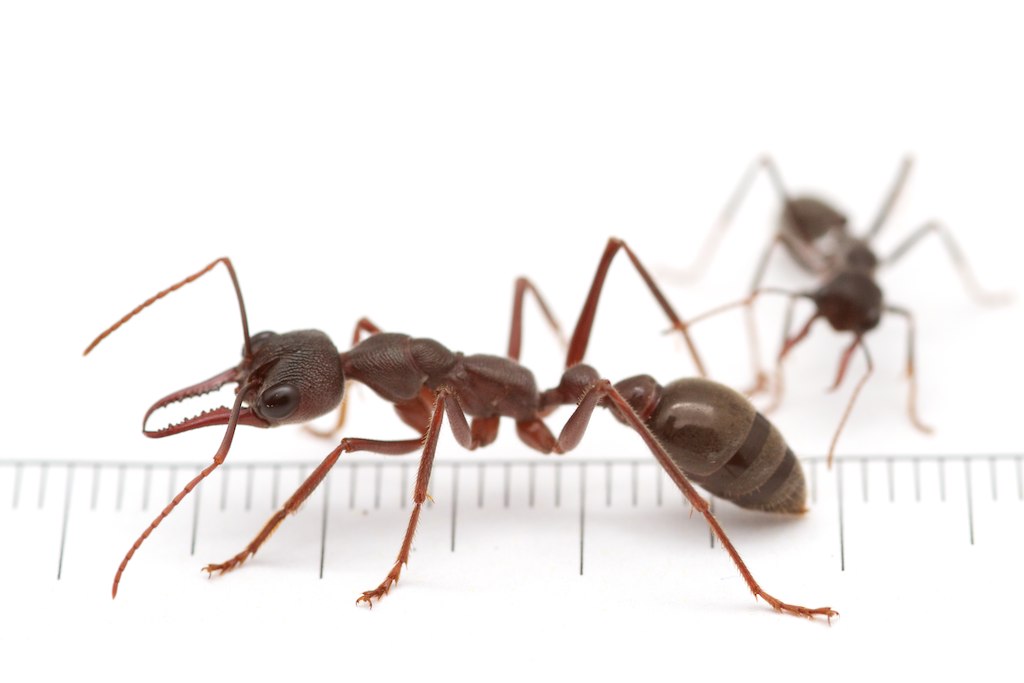
Honey Pot Ants (large number of unrelated species)
Honey pot ants are the camels of the ant family. They live in dry areas throughout the world, but particularly the deserts of Australia, where food and water may be scarce for long periods of time. To cope, honey ants have unique storage tanks for holding liquids, special worker ants called repletes.
When times are good and food is abundant, the repletes drink the extra liquid food and swell up like balloons. Then they hang around, literally, from the ceiling of the nest, until times are tough. If the colony runs out of food, the other workers entice the repletes to spit up their reserves to share with the others. Having repletes is like having liquid food in the bank.
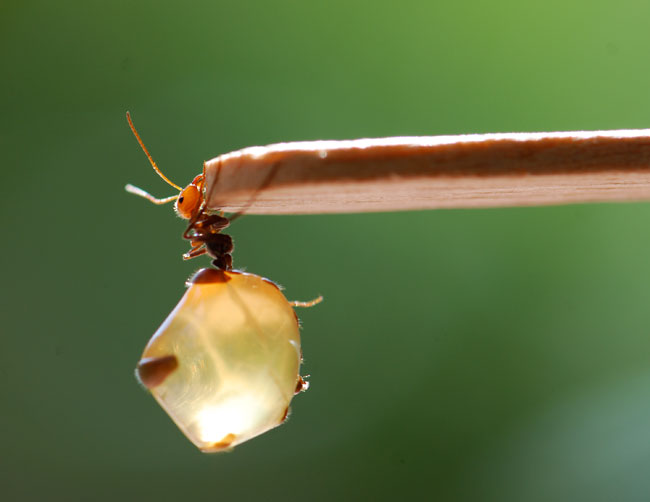
Dinosaur Ants (Nothomyrmecia)
Are these ants really big or really old? No, they are called dinosaurs because they look like a species seen in fossils. Only found in South Australia, they live in small colonies and feed at night. Unlike most ants, the workers don’t have different jobs and they also don’t work together when gathering food. They are quite rare and are under stress due to warming trends.
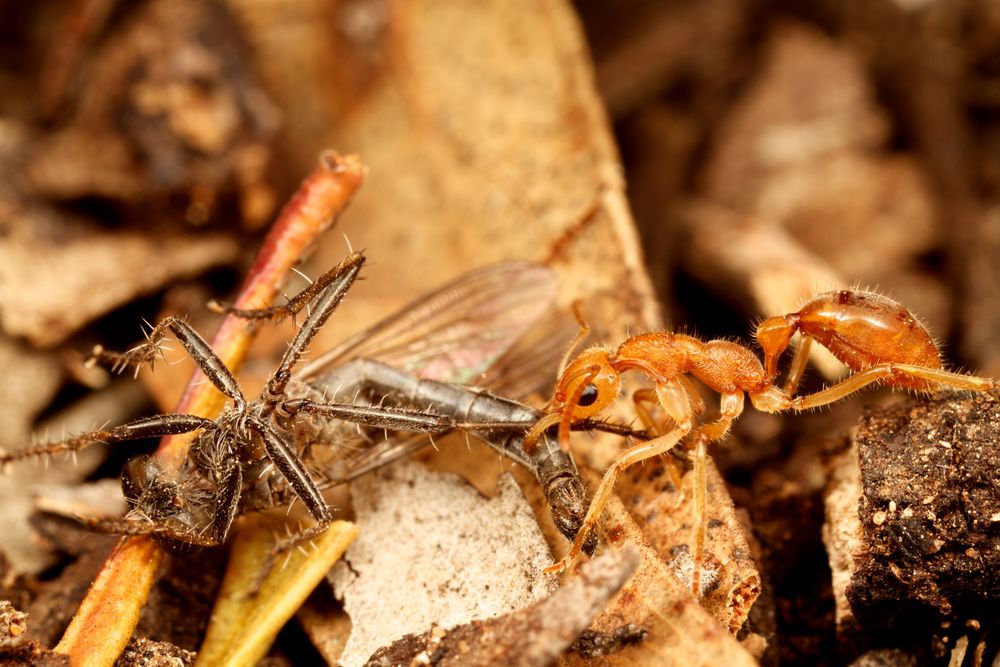
Central and South America
Acacia Ants (Pseudomyrmex species)
These fierce little ants live in the thorns of certain acacia trees of the tropics, hence the name. When an animal comes by to browse on the acacia tree, these ants swarm out en masse and attack. In return for the ants’ services the acacia tree provides shelter and sometimes food for the ants.
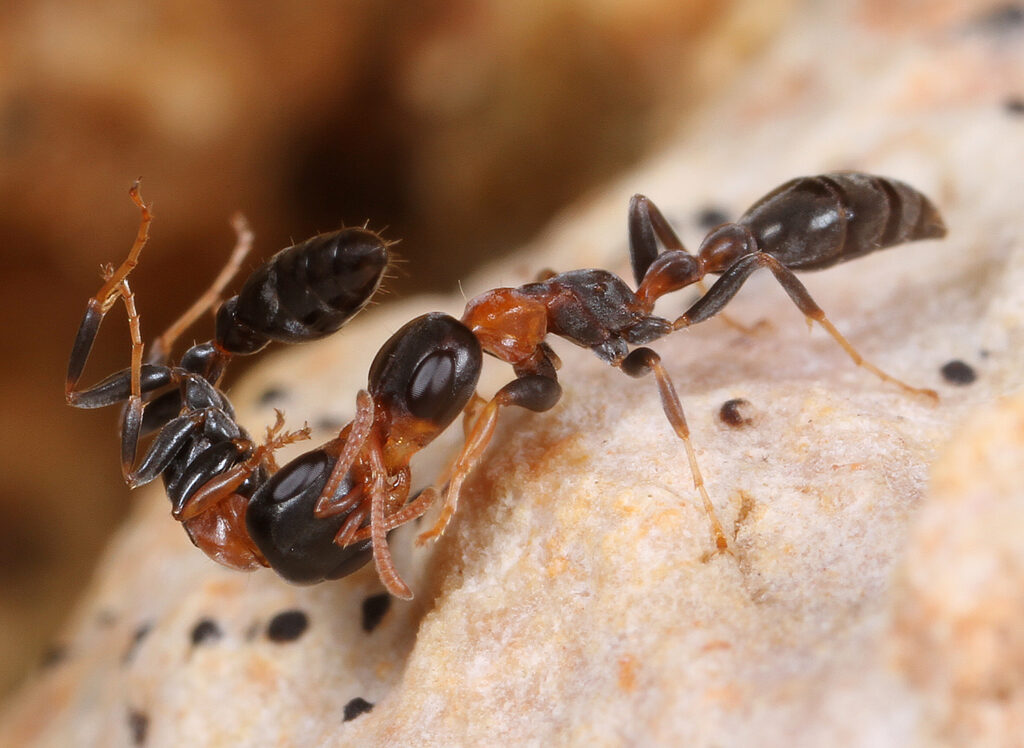
Army Ants, Legionary Ants (a name shared by roughly 150 different species)
Army ants march over the ground in endless streams. These ants don’t make fixed nests like other ants, but are constantly moving from place to place. When they are ready to stop for a period the army ants pile up on the forest floor in clumps. These short-term nests are literally made out of the bodies of the ants themselves.
Army ants are predators, catching any invertebrates in their path. They are constantly moving on to find new food as they clean out the areas they have left behind.
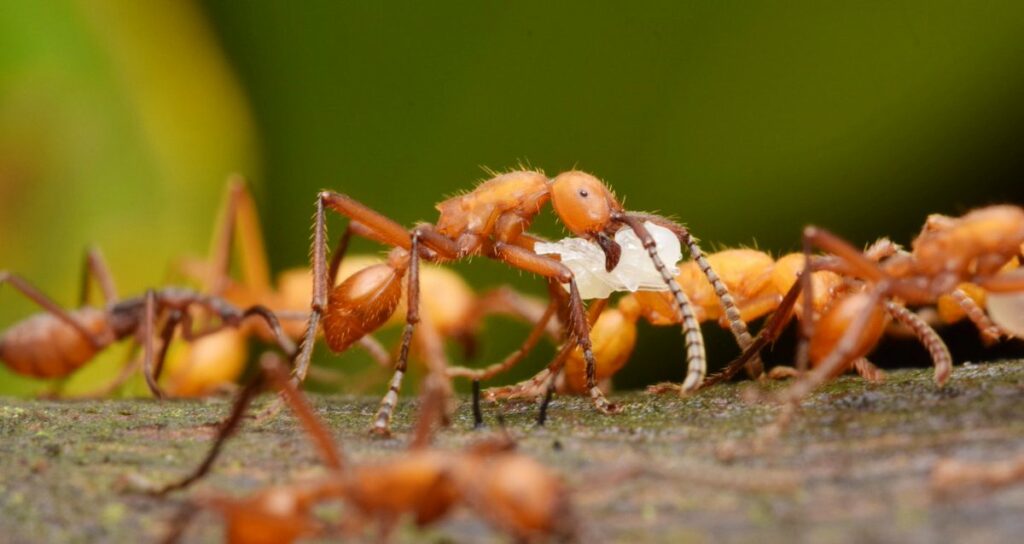
Bullet Ants (also called Bala ants, Paraponera clavata)
Can you imagine a sting so powerful it feels like you have been hit by a bullet? If you ever travel to the tropics, be sure to avoid these large ants because that is how their sting has been described. The workers are huge for ants, up to one inch long (25 mm) and they look like wingless wasps. The good news is bullet ants use their large stingers only to defend their colonies.
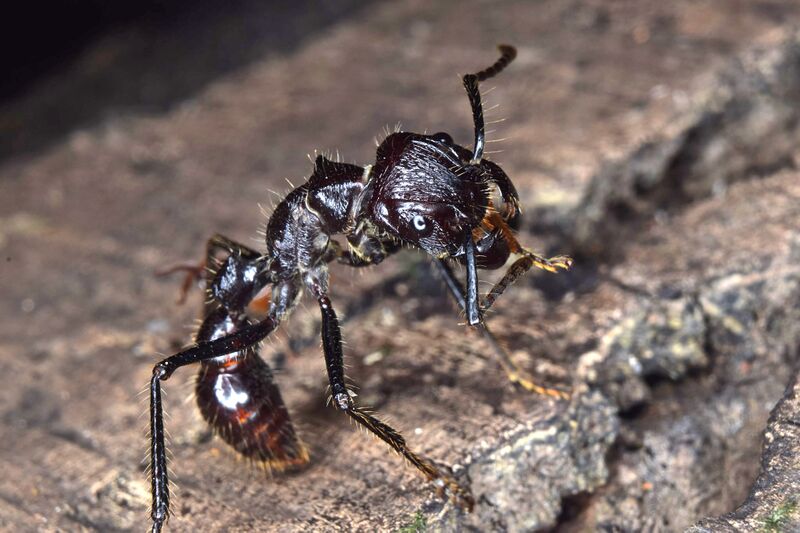
Leafcutter Ants (also called fungus, gardening or parasol ants)
Leafcutter ants cut pieces of leaves and carry the slices back to their nest in their jaws, high above their heads. However, they don’t eat the leaves. Workers chew up the leaves, spread the mushy mess in a special garden area, and then grow a fungus on it.
The leafcutter workers from a single colony vary a lot in size. It is common to see a tiny worker astride a leaf being carried by its much larger sister. If you look closely, leafcutter ants look spiky and spiny like they are covered with thorns.
Leafcutter ants form large, conspicuous nests and have a considerable influence on their environment. Depending on whether or not you are a farmer whose crop is being destroyed, leafcutter ants can be considered to be highly beneficial because of their ability to aerate and move the soil, or terribly destructive because of their ability to remove large amounts of leaves.
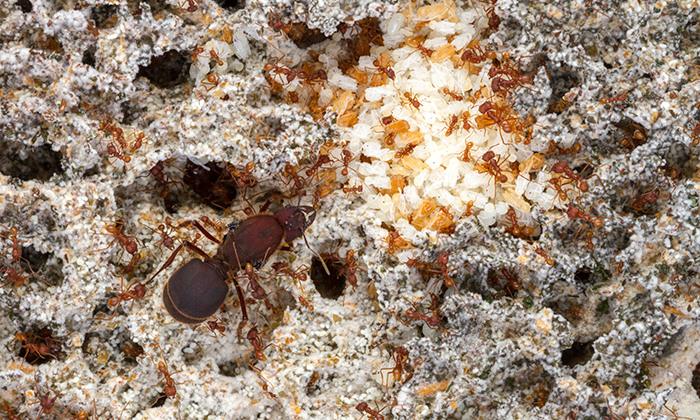
Turtle Ants (Cephalotes)
These interesting ants are found in the tropics, where they are scavengers. They are named for the flattened head and mid-section of the largest workers, called soldiers or majors. Turtle ants nest in trees. The soldiers use their big heads to block the circular entrance to their home, like living doors. Some turtle ants are flattened enough to glide when they fall from a tree branch.
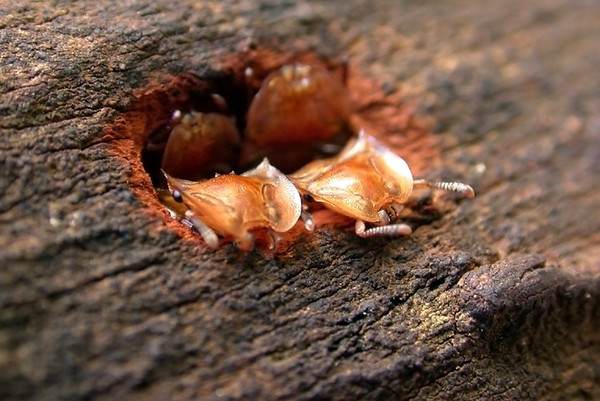
Europe and North America
Wood Ants (Formica), also called Thatching Ants
Easily confused with carpenter ants, these smaller ants are named for the fact they live in forested areas or woods, not because they live in wood. Many species build mounds of soil for nests in the cooler forests of North America, Europe and Asia. The wood ants cover their mounds with pine needles or other bits of plant material, which looks like a thatched roof, hence the common name “thatching ant.”
Wood ants don’t have a stinger. They defend themselves by spraying droplets of formic acid when disturbed, which causes most enemies to run away.
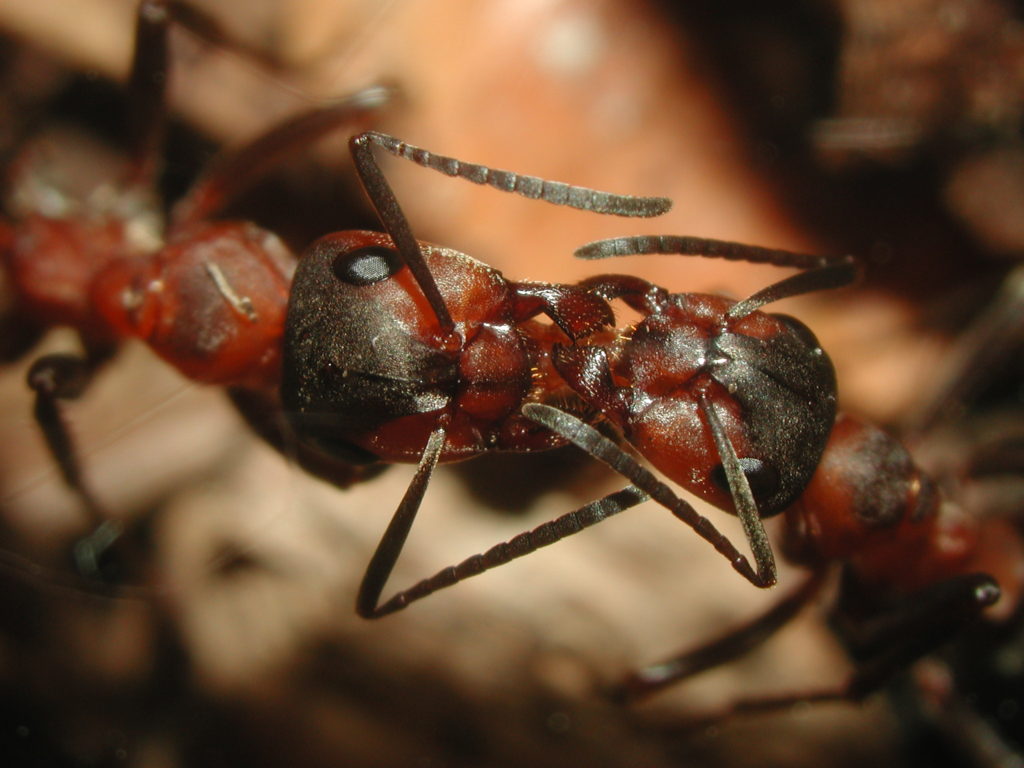
Carpenter Ants
Carpenter ants often dig tunnels in wood. Unlike termites, carpenter ants do not eat wood and some kinds nest in the soil. They are fairly large, up to 1/2-inch-long ants with a smoothly rounded shape. They don’t have bumps or spines.
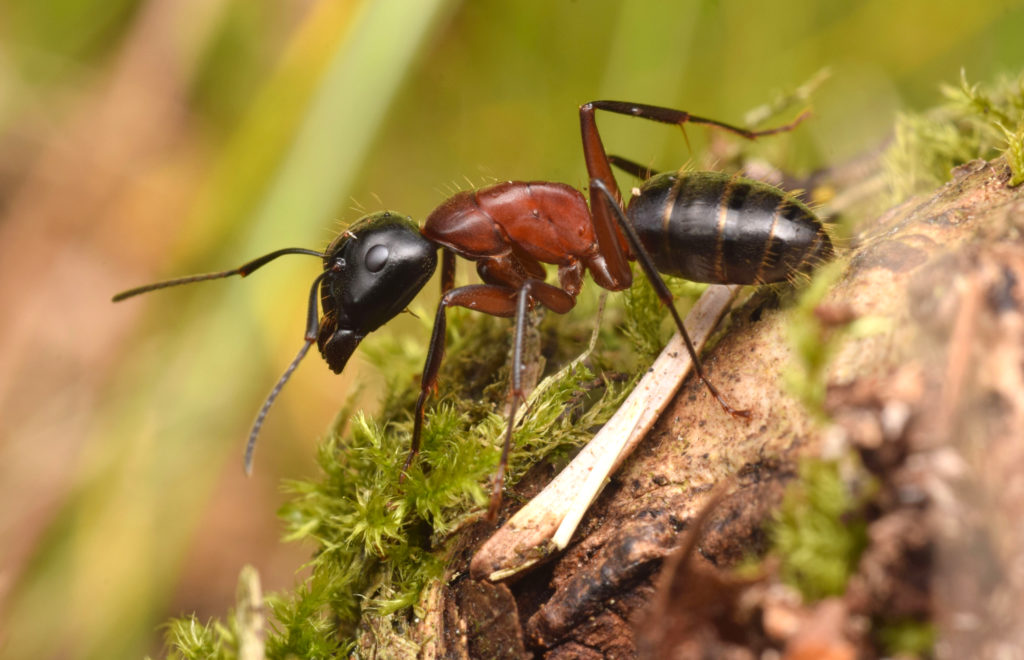
Harvester Ants (many species worldwide, but common in the southwestern United States)
Harvesters gather seeds for food. Most harvester ants live in dry areas or deserts and nest in the soil. They have stingers, which they use to defend their nests against enemies.
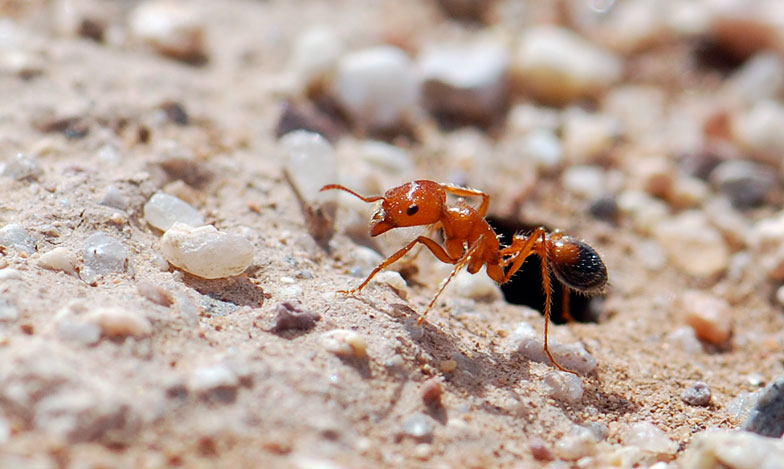
Ants with a Worldwide Reputation
Argentine Ants (Linepithema humile)
Although native to Argentina and Brazil –where they aren’t a problem– Argentine ants have spread and are now found almost worldwide.
Many things about Argentine are unique among the ant world. They move about often, making only rough nests in the soil. The colonies have many queens, and the males and queens mate right inside the nest. Having many queens allows the colonies to become large quickly. In fact, one problem with Argentine ants is that when they are introduced to places they have never been before, they form such large colonies that they drive out many local ants, even ants much bigger than themselves.
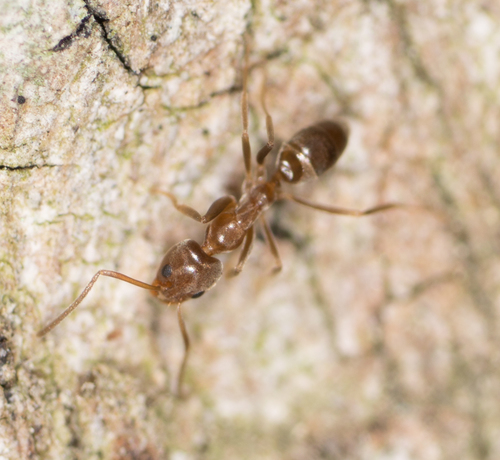
Bigheaded Ants (Pheidole)
Bigheaded ants are a number of species in the genus Pheidole. They are abundant and widespread throughout the world. They are named because the major workers (or soldiers) have huge, square heads in comparison to the regular workers. Some species are harvesters, gathering seeds for food. Bigheaded ant colonies are often found under stones.
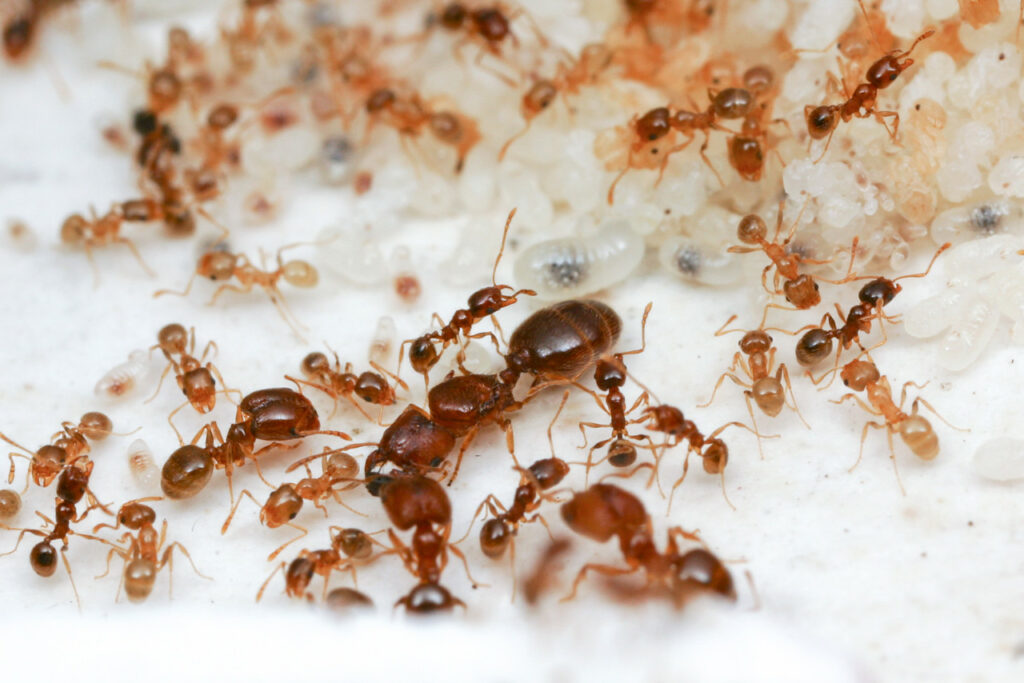
Ghost Ants
Ghost ants are found in warm parts all over the world and in heated buildings where it is colder. The name “ghost” comes from their light-colored gasters, legs and antennae. The heads of ghost ants are darker than the rest of their bodies. In fact, their scientific species name, melanocephalum, means brown head.
Because ghost ants are relatives of odorous house ants, you can give them the sniff test. Workers of both kinds of ants smell like coconuts or rotten coconuts when crushed.
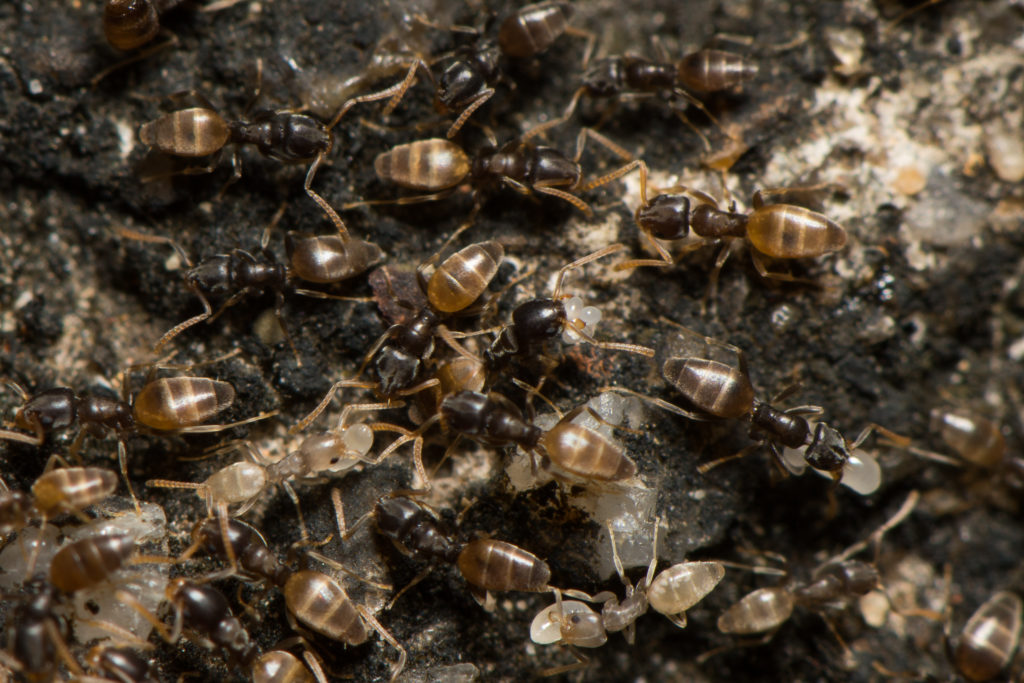
Crazy ants
Crazy ants get their common name because they don’t walk in a straight line. They zig and zag all over the place. There are several different species that move this way. All of them have become problems when they have moved into new areas.
The rasberry – or tawny – crazy ant is not named after the fruit raspberry, but instead after a man who noticed them. His name was Rasberry. Rasberry crazy ants are normally found in South America but made the news when they moved into Texas. Caribbean crazy ants belong to the same genus.
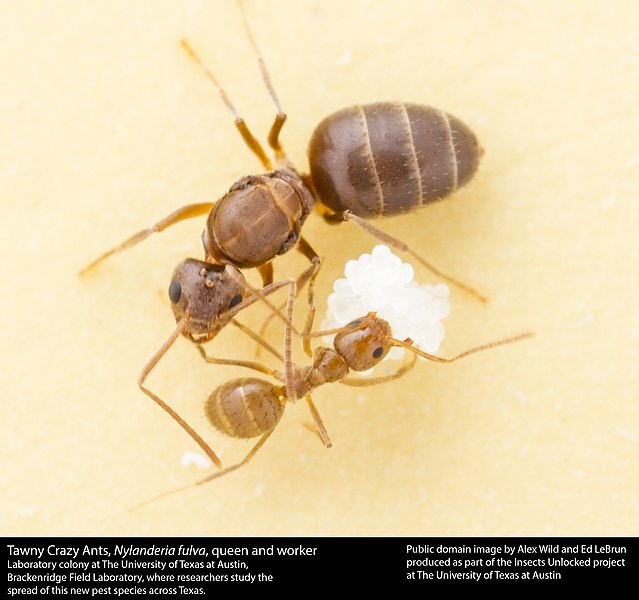
Longhorn crazy ants have extra long antennae. They have spread throughout the world where they drive away the local ants.
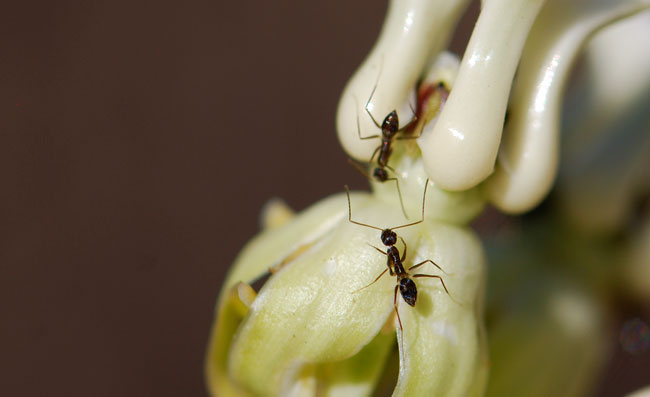
Yet another species, yellow crazy ants have extra-long legs. They are larger than the other crazy ants. Originally from Southeast Asia, these ants have fanned out around the Pacific region.
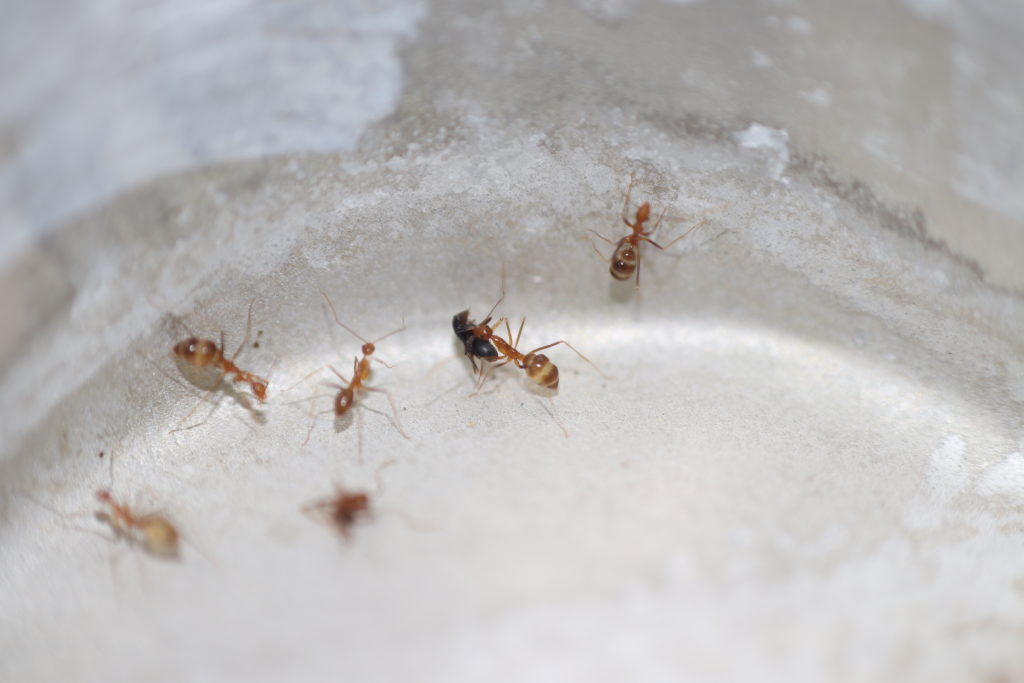
Acrobat ants
Another group of ants found throughout the world are the acrobat ants. The worker ants in this genus are easy to recognize because their gasters are heart-shaped. They also have a unique behavior. When something startles acrobat ants, they point the tip of their gasters straight up in the air.
Acrobat ants often live in trees. Some species have special relationships with the trees they live in. The acrobat ants protect the trees from things that might eat them, and the trees give the ants food and shelter in return.

Pavement Ants
Not to be confused with sidewalk ants, pavement ants have grooves and ridges on the surface of their bodies. They live in the soil, often under rocks or slabs of concrete. They are known for having battles with other pavement ant colonies, often in the spring.
This is only a quick introduction of all the different ants found in the world. Check the blog for descriptions of many more types.
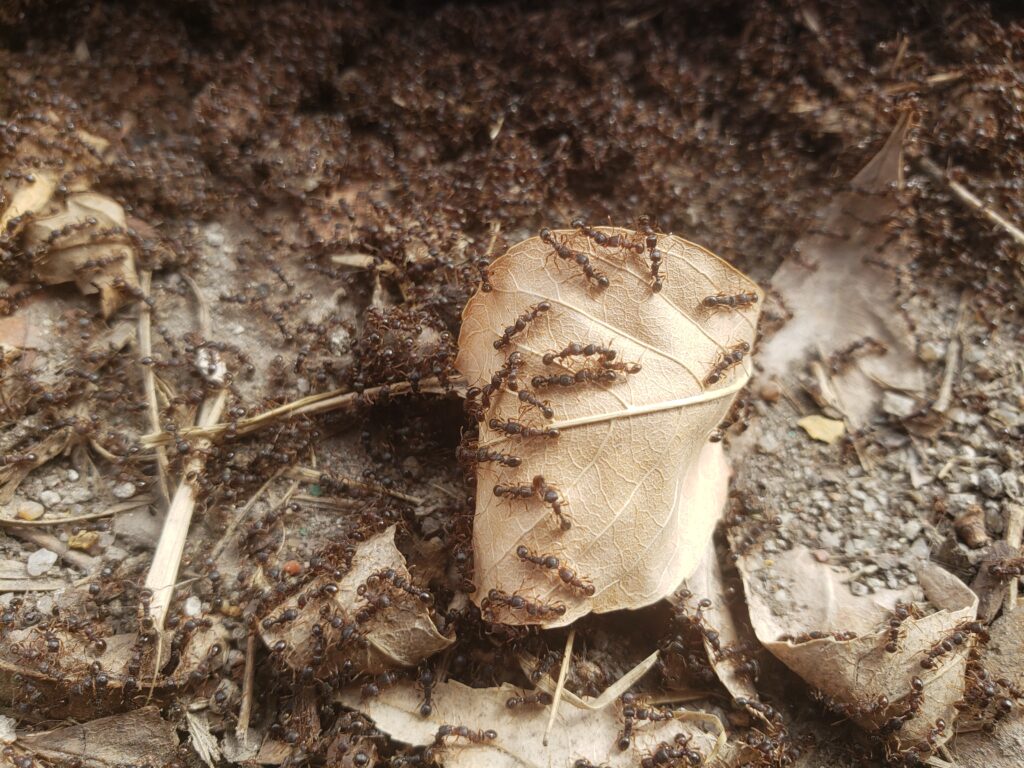
Word find ant puzzle
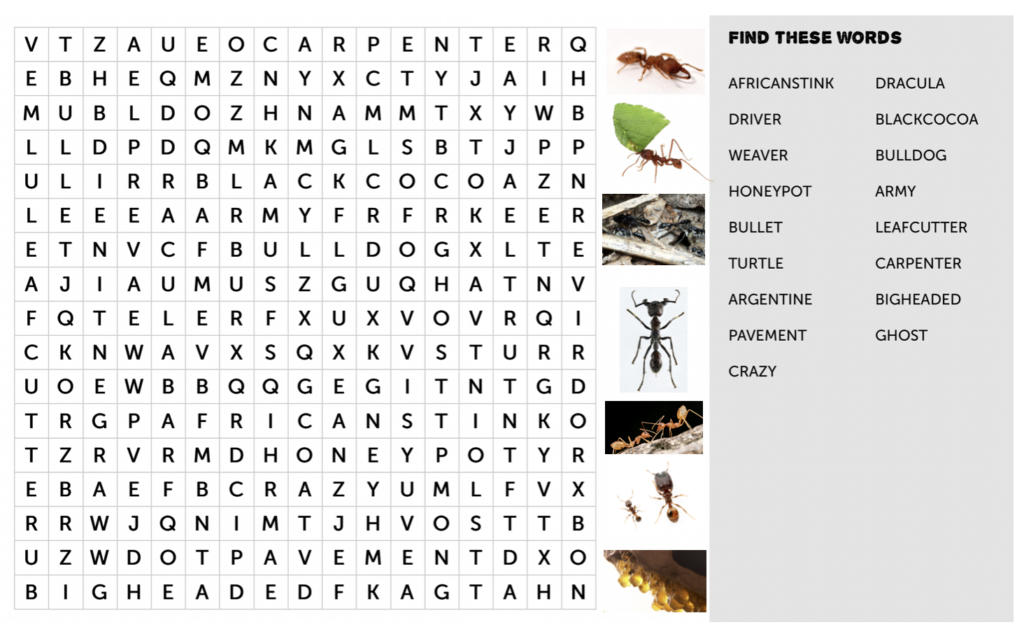
If you enjoyed this post, we would greatly appreciate any feedback, so we can adjust the posts for the kids section accordingly.



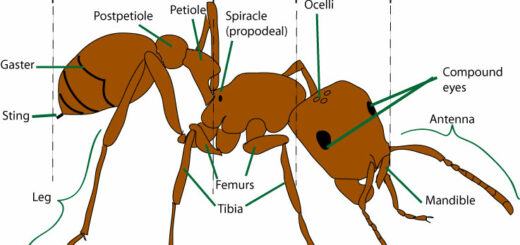
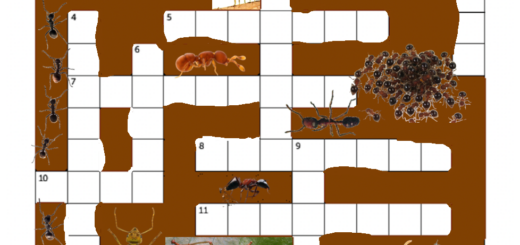
Recent Comments